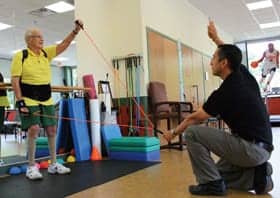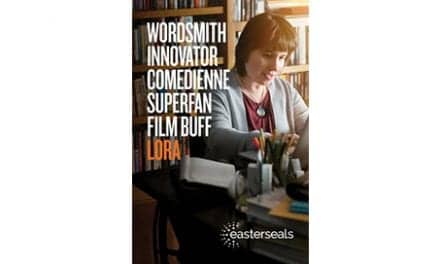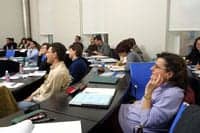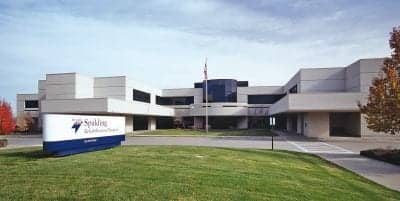A look behind the protocol that drives Burke Rehabilitation Hospital’s Arthritis Center.
by Bento Mascarenhas, MD, FACP, FACR, William Siegel, PT, DPT, Cert MDT, and Sudhir Vaidya, MD

With more than 100 types of arthritis, affecting more than 46 million Americans, arthritis is a serious condition that does not have a one-size-fits-all solution. Treatments designed to be effective for specific types of arthritis are of strong importance among the millions of individuals affected by the condition, including those who still work. As a medical rehabilitation hospital that provides therapy for those who have had knee and hip replacements—some of which are made necessary by the effects of arthritis—Burke Rehabilitation Hospital opened the Arthritis Center in 1986 to help patients potentially avoid having joints replaced, and to help them resume a productive and active lifestyle.
The Arthritis Center provides a comprehensive, multidisciplinary medical and therapeutic program for patients affected by various types of arthritis, including: rheumatoid arthritis, osteoarthritis, psoriatic arthritis, ankylosing spondylitis, lupus, myopathies, vasculitis, and other musculoskeletal disorders and connective tissue disease. The center offers numerous therapies that focus on pain relief, control of inflammation, management of medication, and improvement of function and independence. These include warm water pool therapy, special exercises, and a variety of drug regimens, which are important components of treatment.
The Arthritis Center serves nearly 1,800 patients annually, most commonly those individuals affected by osteoarthritis and rheumatoid arthritis, the two most common types of arthritis.
Osteoarthritis is a degenerative form of the disease and affects large joints such as the knees, hips, shoulders, spine, and back. Rheumatoid arthritis, in contrast, is an immunological condition, and affects the peripheral joints. Because each of the many types of arthritis is different, patients undergo a thorough evaluation with Burke’s rheumatologist to receive a proper diagnosis. A physician at Burke performs a physical exam, takes a detailed history of the patient, and also orders tests as necessary to find the root cause of pain. Once the arthritis type is determined, an individualized treatment is put in place to address the cause of the pain. Younger patients diagnosed with rheumatoid arthritis will typically receive a more aggressive treatment to help them resume activities and continue to work as long as they desire. The goal of the Arthritis Center is to increase patients’ mobility and function, enabling them to work and live active lives.
Physical Therapy
The Arthritis Center works closely with the Burke outpatient physical therapy department. Burke’s physical therapists provide modalities and therapeutic exercises to increase patient comfort and to manage symptoms. Exercise is a tool used to restore function, to decrease stiffness, and even as a pain reduction technique. Many people who suffer from osteoarthritis may decrease their physical activity to avoid further pain. However, exercising with proper guidance can actually relieve pain. By increasing muscle health and joint mobility, stiffness and pain can be reduced.
Osteoarthritis usually responds well to weight-bearing activities, which are essential for building and maintaining healthy bones. With weight-bearing activities, bones in the body become stronger and more dense. The risks of fracture, osteopenia, and osteoporosis can all be decreased with a healthy skeletal system. Research has shown that exercise can increase joint mobility and decrease pain. Symptoms must still be respected, and water-based therapy is a viable alternative for those with an intolerance for land-based exercise. To help accommodate such cases, Burke has a warm-water therapeutic pool. The water provides buoyancy, which allows for a reduction in joint loading. The combination of warm water and decreased loading on the joints allows a person to exercise without the pain that might otherwise be felt by performing land-based activities.
In addition to patient-specific exercises, Burke provides several modalities to increase circulation and relax muscles. Low-level laser therapy or cold laser is used to increase cellular activity, helping to aid in healing tissue and decreasing pain. Transcutaneous electrical nerve stimulation (TENS) is used to treat neuropathic pain, which typically occurs when bone deformities or swelling presses against nerves. Select forms of TENS also have been shown to decrease hand pain in rheumatoid arthritis patients, reducing pain intensity and improving muscle power by decreasing pain and tenderness in the joint. Additional forms of TENS have exhibited clear clinical benefits during patient assessment of change in disease.1
Therapeutic tape2 can be applied to assist with circulation, joint movement, and muscle and posture re-education. Therapeutic taping methods provide support and stability to joints and muscles by activating the neurological and circulatory systems. Stemming from kinesiology or the study of human movement, this method follows the concept that muscles not only control the movement of the body but also the circulation of venous and lymph flows. Therefore, if the muscles do not function properly, various symptoms including pain can result.
Topicals such as anti-inflammatory creams and lotions used as an adjunct for chronic pain also have been found to have limited benefit, but there are many studies currently under way to further test their effectiveness. Of all the agents used, capsaicin-based products have shown promise in good studies. There is more research needed in this area.
Iontophoresis is the noninvasive transport of medication through the skin using direct electric current. The treatment is based on the premise that an electrical charge will repel a substance with a similar charge and direct those substances into the skin. Substances with a positive charge can be introduced into the skin and mucous membranes of the body with a positive electrode. Those with a negative charge can be introduced by the negative electrode. Common uses of iontophoresis by physical therapists can include, but are not limited to, the treatment of inflammatory conditions, such as arthritis; edema; and topical anesthesia of the skin. Clinical applications of iontophoresis can be for the treatment of tennis elbow, Achilles tendinitis, or bone spurs of the shoulder.
The most common substances used with iontophoresis are acetic acid, Decadron, and Xylocaine. Acetic acid with its negatively charged ion acetate is commonly used to treat calcium deposits such as bone spurs found in the shoulder. Decadron with its positively charged ion dexamethasone is used for the treatment of inflammatory conditions such as tendinitis. Xylocaine, with its positively charged ion lidocaine, can be used as an anesthetic.
There are very few contraindications with the use of iontophoresis. The treatment should not be used with those who have skin reaction sensitivity or decreased skin sensation. In addition, it is contraindicated for those with sensitivity to aspirin, metals, or seafood. Reimbursement for the use of iontophoresis has changed over the years. Check with the APTA, your administrator, physical therapist, or provider to inquire about their reimbursement policies.
Outside of the physical therapy clinic, patients are taught to independently manage their symptoms through the use of hot and cold packs. These are simple modalities used to increase circulation, decrease pain, and promote muscle relaxation. Proper diet and weight management help to avoid undue stress on joints. Proper posture and body mechanics help protect the body and increase the effectiveness of exercise in and out of the clinic. In general, the Arthritis Center prescribes physical modalities and exercise over medications. These conservative methods can be beneficial to the body as a whole to increase strength and decrease pain. However, if physical therapy does not improve the pain, other medical interventions may be prescribed.
Nonphysical Interventions
In conjunction with physical therapy, some arthritis patients are also given nonsteroidal anti-inflammatory drugs (NSAIDs) to treat acute or chronic conditions, as well as nonsteroidal analgesic patches. Adjuvant medications, typically antidepressants or antiepileptic drugs, also are prescribed, depending on the type of arthritis/pain.
For those with back or disc pain, the Arthritis Center refers patients to anesthesiologists who can administer epidurals to help manage the pain. Patients with rheumatoid arthritis may be prescribed disease-modifying antirheumatic drugs (DMARDs) to reduce inflammation and further damage. If the patient does not react well to DMARDs or cannot handle a large enough dose to relieve inflammation, biological agents4 also may be used. These agents target molecules in immune system cells that are secreted in joints, causing inflammation and joint destruction. Biologics begin working within 2 weeks to 6 weeks whereas DMARDs can take at least 1 month before the patient feels any effects. These two interventions can be used in combination together or with NSAIDs and steroids.
If none of these treatments work, then opiates are prescribed as a last resort, and are monitored carefully for signs of dependence. Sometimes, patients also may be psychologically affected by their decreased function and may be referred to a psychiatrist.
Alternative Therapies
Along with physical therapy, Burke also offers complementary therapy services through the Therapeutic Recreation department. Although its services are reserved for inpatients only, some of the therapies they provide are applicable to outpatient arthritis patients.
In the inpatient setting, the Therapeutic Recreation department provides massage therapy using five basic strokes to manipulate soft tissue and encourage circulation while influencing the lymph system, says Alexandra Oudheusden, director of Therapeutic Recreation.
Citing the American Massage Therapy Association,5 Oudheusden says that recent studies have suggested that massage can help reduce pain and increase mobility for arthritis sufferers because it increases motion and stimulates blood flow in areas that are tight. More importantly, it can help patients relax and, according to a study done by the Touch Research Institute at the University of Miami School of Medicine, patients who have wrist/hand arthritis and are receiving massage therapy showed lower anxiety and depressed mood, and by the end of the study reported less pain and greater grip strength.
Another study published in the Annals of Internal Medicine,6 this time looking at 401 people with chronic low back pain, found that massage reduced pain up to at least 6 months. It also found that the type of massage didn’t matter as long as it provided light to moderate pressure.
Arthritis suffers can take advantage of this therapy either at home or with a licensed massage therapist. If doing the former, arthritis sufferers should start with large strokes to warm up the muscles before moving on to more precise strokes that target specific areas. These can include holding pressure points, rubbing across a small area, or using deeper strokes to stimulate the muscles. Applying heat prior to massage also can help relax the muscles and ready them for massage.
Tai Chi is another option for managing arthritis pain. In late 2012, Burke was recognized as a Certified Tai Chi & Qigong Teaching facility by the American Tai Chi & Qigong Association. Through a partnership it has established, Burke offers Tai Chi for Arthritis workshops that focus on Tai Chi movement that helps warm up joints and muscles. Tai Chi has been found to help alleviate pain in both osteoarthritis7 and rheumatoid8 arthritis patients.
Having arthritis does not mean people will have to give up work or diminish their physical activity. Patients today who are affected by arthritis are better informed than ever about the spectrum of treatment available, and have an effective set of options they can turn to that will help maintain function and productivity. RM
Bento Mascarenhas, MD, FACP, FACR, is the director of the Arthritis Center at Burke Rehabilitation Hospital in White Plains, NY. He has been with Burke since 1986 when he helped found the Arthritis Center.
William Siegel, PT, DPT, Cert MDT, is the clinic supervisor of Burke’s outpatient satellite clinic in Mamaroneck, NY. He has been with Burke for 15 years.
Sudhir Vaidya, MD, is the director of Burke’s Sports Medicine and Pain Management program and medical director of the Fitness Center at Burke. He is also an assistant professor of Clinical Medicine at Burke’s academic affiliate Weill Cornell Medical College in New York City. He has been with Burke for 15 years. For more information, contact [email protected].
References
1. Brosseau L, Judd MG, Marchand S, et al. Transcutaneous electrical nerve stimulation (TENS) for the treatment of rheumatoid arthritis in the hand. Cochrane Database Syst Rev. 2003;(3):CD004377. DOI: 10.1002/14651858.CD004377. See more at: http://summaries.cochrane.org/CD004377/transelectrical-nerve-stimulation-tens-helps-decrease-hand-pain-in-people-with-rheumatoid-arthritis#sthash.vrdPv3FQ.dpuf
2. What Does Kinesio Taping Do? Kinesio Taping in Canada. Available at: http://www.kinesiotape.ca/whatitdoes.htm.
3. http://physical-therapy.advanceweb.com/Article/New-Uses-for-Iontophoresis.aspx Gersh, Meryl Roth. Electrotherapy in Rehabilitation. F.A. Davis Company. 1992.
4. PJW Venables, MD, FRCP, MA, MB BChir, 2013. Patient information: Rheumatoid arthritis treatment (Beyond the Basics). Available at: http://www.uptodate.com/contents/rheumatoid-arthritis-treatment-beyond-the-basics
5. JoAnn Milivojevic, 2007. Relief Within Reach. Available at: http://www.amtamassage.org/articles/3/MTJ/detail/1650
6. Susan Bernstein. Benefits of Massage. Arthritis Today. Available at: http://www.arthritistoday.org/arthritis-treatment/natural-and-alternative-treatments/remedies-and-therapies/benefits-of-massage.php.
7. Tai Chi Is Effective in Treating Knee Osteoarthritis: A Randomized Controlled Trial. National Institutes of Health. Available at: http://www.ncbi.nlm.nih.gov/pmc/articles/PMC3023169/
8. Tai Chi exercise and auricular acupressure for people with rheumatoid arthritis: an evaluation study. National Institutes of Health. Available at: http://www.ncbi.nlm.nih.gov/pubmed/22830622
i. [removed]http://www.jointpain.insulitelabs.com/why-movement-saves-joints[/removed]





